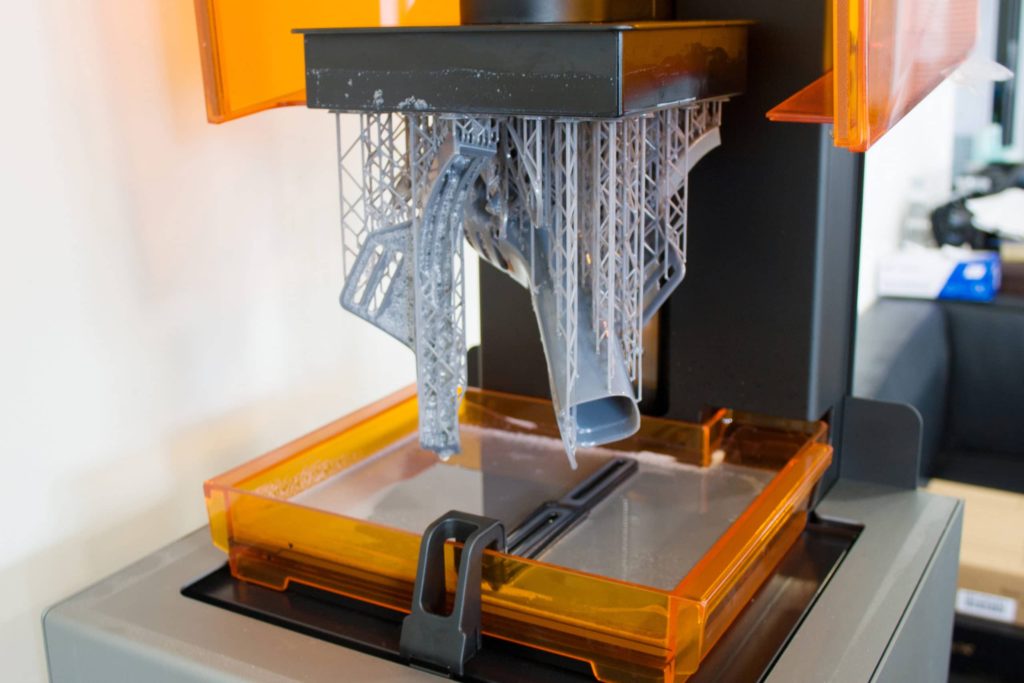Are you looking for the best way to 3D print your next project? The method you choose can play a major role in the cost, runtime, and final result of your creation, so it’s important that you use the right 3D printer for you.
One of your options to consider is SLA printing – one of the more popular methods for high-precision projects.
What is SLA Printing?
Stereolithography (SLA) is a form of 3D printing that uses an ultraviolet laser to turn a photosensitive liquid resin into your solid component. This differs from FDM printing, another popular 3D printing method, because it requires a liquid base to be provided in order to create the object. It is limited by the size of the basin used for the liquid resin, and can only use specific resins, limiting the material flexibility.
How Does SLA Printing Work?
Using a CAD file of the project and importing it into the 3D printer as a STL file, the machine positions a mirror that reflects the laser into the liquid. This allows it to hit the precise location that corresponds with the blueprint it is provided for creating the object, leaving the rest of the resin untouched. It then travels layer-by-layer to build the object from the bottom up.
Why Use SLA Printing
Precision
Of the 3D printing methods available, SLA printing is the most precise. SLA printers can operate as thin as 25 μm, which is less than half of many FDM printers. It also has an incredibly tight dimensional tolerance, ensuring the final product is as close to the intended scale as possible.
Smoothness
A major benefit of SLA printing versus other methods is the ability to create incredibly smooth final products. FDM printers often need to be refined to create a smooth edge, but the liquid resin hardens uniformly to create smooth layers that fit perfectly on top of each other.
Scalability
SLA printers can only print as large as the liquid basin allows for, but projects of any size can still achieve high quality printing due to the precision of the laser and the tight dimensional tolerance.




